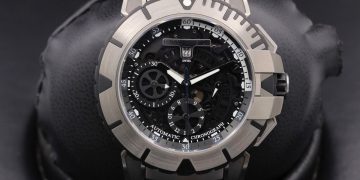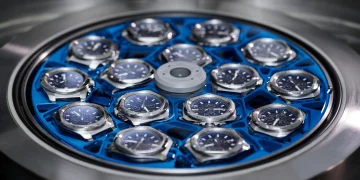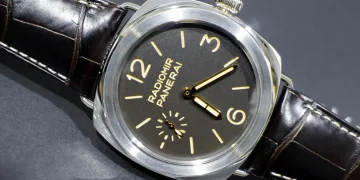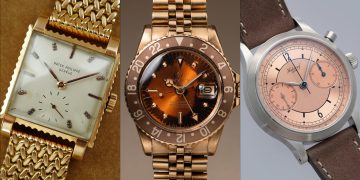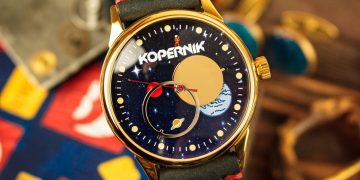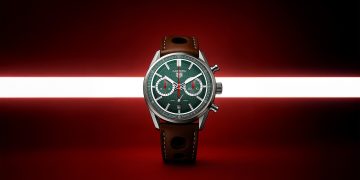Introduction:
The world of luxury watches is deeply intertwined with tradition, craftsmanship, and innovation. Watchmaking, as an art form, has evolved over centuries, with some of the most renowned brands tracing their roots back to the 19th or even the 18th century. The long histories of these brands significantly influence their modern designs, blending time-honored techniques with contemporary aesthetics and innovations. But how does a watchmaker’s heritage shape its design philosophy today?
This article explores the influence of a watch brand’s long history on its modern design. From the preservation of classic elements to the integration of technological advancements, we will examine how brands balance their storied pasts with the demands of today’s watch enthusiasts.
1. The Role of Tradition in Modern Watchmaking
1.1 Maintaining Design DNA
One of the most significant ways that a brand’s history influences its modern designs is through the preservation of its design DNA. Iconic brands such as Rolex, Patek Philippe, and Audemars Piguet have cultivated strong design identities over decades or even centuries. These elements, rooted in the brand’s history, continue to appear in their modern collections.
- Signature Elements: Certain design features, such as the fluted bezel on a Rolex Datejust, the calatrava cross on a Patek Philippe, or the octagonal case on an Audemars Piguet Royal Oak, have become iconic in the watch industry. These design cues are synonymous with the brand’s identity and are often carried over into newer models.
- Consistency: While many modern watch brands embrace bold experimentation, traditional brands often stay true to their historical design elements. This consistency in design helps retain the brand’s legacy and ensures that new models feel connected to the past, maintaining a sense of continuity.
1.2 Evolution, Not Revolution
While the historical legacy of a watch brand shapes its design, it doesn’t mean that the brand refuses to innovate. Instead, many brands look to evolve rather than completely reinvent their designs. The most prestigious brands balance the preservation of their history with the introduction of new materials, technologies, and functionalities.
- Refinement: Older designs are often refined over time, rather than replaced. For example, Rolex has made slight but notable tweaks to its iconic Submariner, improving features like the movement and case while keeping the visual identity largely intact.
- Respecting Tradition: The modern designs of historically rich brands are influenced by the principles that guided their creators, such as precision, elegance, and functional beauty. This respect for tradition allows these brands to remain relevant without losing their identity.
2. The Influence of Watchmaking Heritage on Materials and Craftsmanship
2.1 High-Quality Materials Rooted in Tradition
For brands with a long history, their commitment to using high-quality materials is often tied to their legacy. The watchmaking process itself is rooted in techniques that have been passed down over generations. Modern designs often carry these materials and processes forward while still adapting to the latest technological advances.
- Precious Metals and Alloys: Historically, watchmakers like Patek Philippe and Vacheron Constantin have used fine materials such as gold, platinum, and steel. These materials continue to be central to their modern designs, as they represent the timelessness and luxury that the brands stand for.
- New Materials Inspired by Tradition: As modern watchmaking embraces innovative materials such as ceramic, titanium, and carbon fiber, luxury brands still draw inspiration from their historical use of materials. These newer materials are often used to improve durability and performance while maintaining the aesthetic integrity that is rooted in the brand’s legacy.
2.2 Craftsmanship and Artistry
A watch’s craftsmanship is often the most visible link to its history. Many high-end brands continue to handcraft their timepieces using manual techniques that have been perfected over centuries. The artistry behind a brand’s modern watches reflects this heritage.
- Manual Movements: For brands like Jaeger-LeCoultre or A. Lange & Söhne, the art of creating mechanical movements is a key part of their heritage. These brands often incorporate hand-finished movements into their modern designs, showcasing the craftsmanship that has made them household names in the watch industry.
- Decorative Techniques: Decorative techniques such as guilloché, enamel, and engraving are often passed down through the generations. These methods have not only enhanced the visual appeal of luxury watches but also highlighted the technical mastery of the watchmakers.

3. Innovation Within the Framework of Tradition
3.1 Incorporating Modern Technology
Although rooted in tradition, many iconic brands have incorporated modern technology to improve the performance and precision of their watches. The ability to merge cutting-edge innovations with centuries-old techniques is a hallmark of the best brands in the industry.
- Automatic and Self-Winding Movements: Modern innovations such as self-winding movements or chronograph complications were groundbreaking in their time, and many traditional brands now incorporate these features into their watches while maintaining historical craftsmanship standards.
- Precision Engineering: Advances in technology, such as silicon escapements, high-frequency movements, and superior anti-magnetic capabilities, are often integrated into the brand’s signature designs. These improvements are often invisible to the eye but greatly enhance the performance and longevity of a timepiece.
3.2 Modernizing Classic Designs for Contemporary Tastes
Luxury watch brands that have a long history are often tasked with keeping their classic designs relevant to modern tastes. The challenge lies in evolving aesthetic choices and functionality without losing the essence of what makes the brand unique.
- Dial Design: The dial layout of watches often remains true to their history, but modern materials such as sapphire crystals, luminescent markers, and matte finishes are used to give the watch a more contemporary feel.
- Functionality: While the aesthetic might be historically inspired, modern features such as smart technology, enhanced water resistance, or durability are incorporated to meet the demands of today’s market.
3.3 Collaboration with Designers and Artists
Another way in which heritage influences modern design is through collaborations with contemporary designers and artists. Many watch brands with a long history occasionally collaborate with cutting-edge designers to bring a fresh perspective to their designs while still respecting their legacy.
- Limited Editions and Special Models: Exclusive collaborations often celebrate the brand’s history while embracing contemporary design trends. For example, Omega has released limited-edition models commemorating the brand’s involvement in the space race or James Bond films, mixing tradition with modern-day cultural references.
4. The Consumer’s Perception of Heritage in Modern Watches
4.1 Emotional Connection to History
The long history of a watch brand can create an emotional connection with consumers. The desire to own a piece of history is a powerful motivator. Many collectors purchase watches not only for their aesthetic or functionality but also for the legacy they represent.
- Brand Loyalty: Buyers who have an appreciation for a brand’s legacy are often more loyal to that brand, even when newer competitors emerge. They see themselves as part of the brand’s ongoing story.
- Timeless Appeal: The emotional appeal of owning a piece of history cannot be underestimated. A luxury watch, especially from a brand with a long history, is more than just a timekeeping device; it’s a link to a century-old tradition of excellence.
4.2 The Balance Between Innovation and Tradition
While the history of a brand greatly influences its modern designs, the modern consumer also demands innovation. The challenge for luxury brands is to strike the perfect balance between honoring their past and keeping pace with modern advancements in design and technology.
- Brand Evolution: Brands that successfully integrate history with innovation are those that understand their heritage but are not afraid to evolve. This evolution can involve embracing new materials, designs, and functions that appeal to contemporary tastes while maintaining respect for the brand’s legacy.
5. Conclusion:
The long history of a watch brand is undeniably a key influence on its modern design. For heritage brands, their design DNA, materials, and craftsmanship are deeply connected to their past, which informs how they approach modern aesthetics and technological advancements. While maintaining their historical elements, these brands are able to innovate, adapt, and meet the demands of today’s discerning buyers.
The challenge for high-end watch brands is to maintain a delicate balance between honoring tradition and embracing modernity. It is through this integration of history with contemporary design and functionality that the best luxury watch brands continue to captivate and inspire collectors, enthusiasts, and buyers alike.



